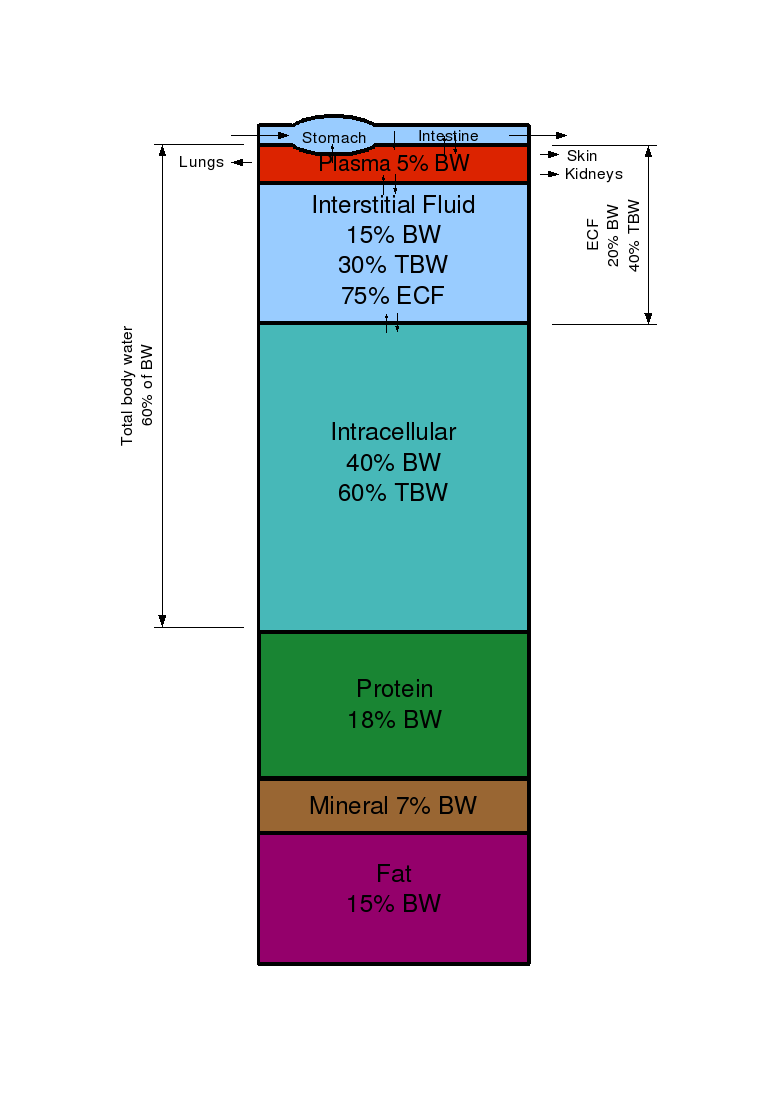General and cellular basis of physiology
The individual cells of the body require a milieu imilar to that of the primordial sea and it is the extracellular fluid which is responsible fr providing this environment. Howeverm, as can be seen from the diagram below, its vlume is even smaller than the intracellular volume and it would quickly become depleted of nutrients and saturated with waste products were its composition not carefully regulated. This is brought about through homeostasis.
Body fluid compartments

The actual proportion of weight represented by water varies with age and sex as shown in the table below
| Age | Male (%) | Female (%) |
|---|---|---|
| 10-17 | 59 | 57 |
| 18-39 | 61 | 51 |
| 40-59 | 55 | 47 |
| 60 + | 52 | 46 |
Plasma volume can be measured using a dye which binds to the plasma proteins (e.g. Evan's blue) or by the use of iodine-labeled albumin. Provided the haematocrit is known, then this can be used to calculate the blood volume
Red-cell volume can be measured with radio-labelled red-cells (e.g. 51Cr). After injection of a known quantity of cells.
ECF volume is difficult to measure because few substances mix rapidly in all areas while remaining extracellular. A small volume of fluid is physically separated from the ECF and may be indentified as transcellular fluid - e.g. CSF, aqueous humor, GI contents. The best esimate of ECF comes from inulin dilution techniques.
Interstitial fluid volume cannot be measured directly and is instead derived by subtraction of plasma volume from ECF volume. Similarly, intracellular fluid volume cannot be measured, but is derived from TBW-ECF.
Total body water is measured by dilution of D2O